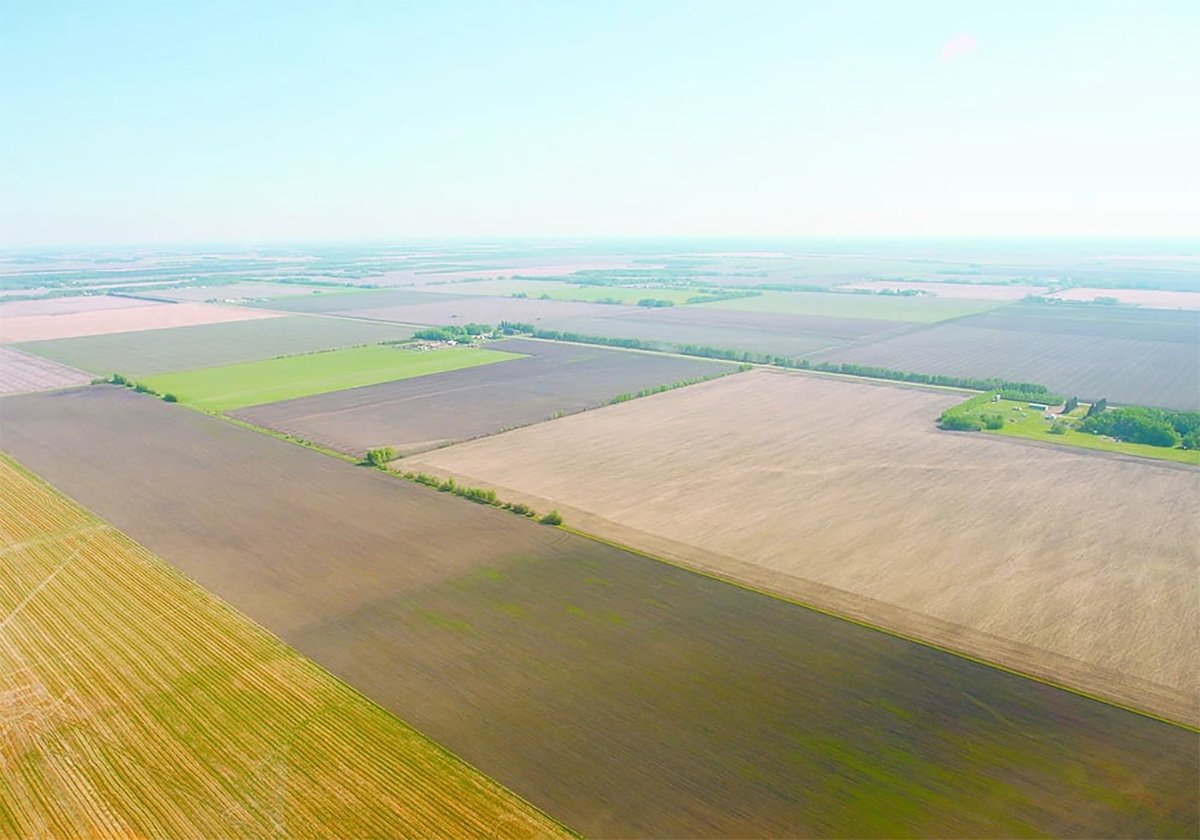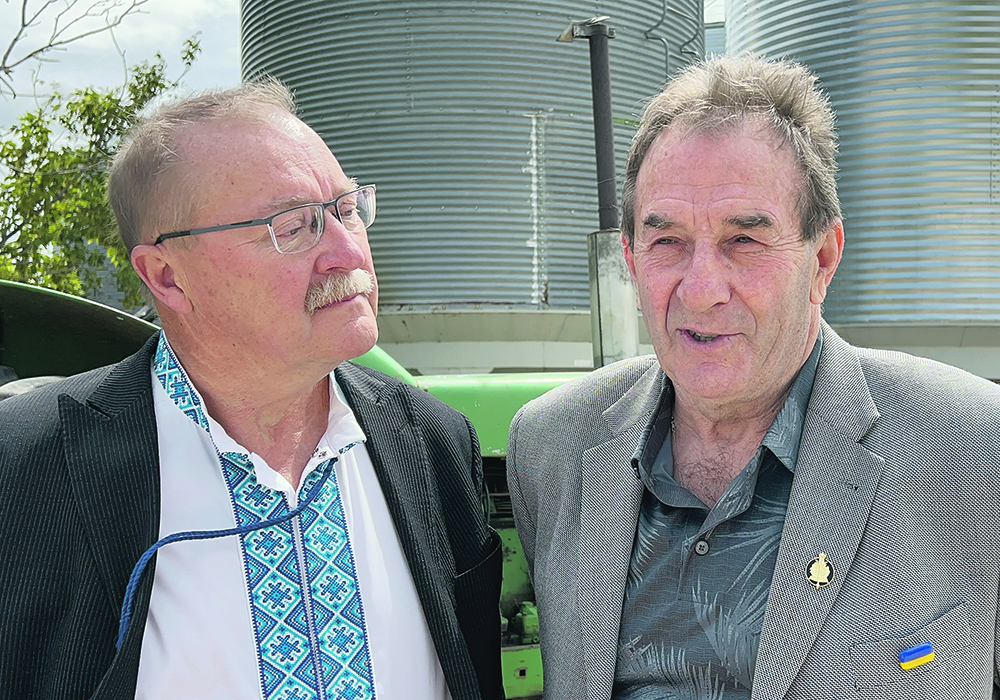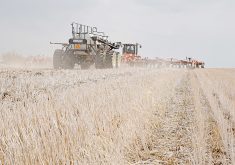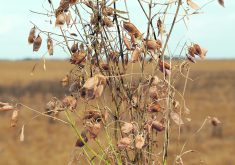The industry has made tremendous strides, going from 20,000 acres of the crop in 2000 to 1.5 million acres today
DAUPHIN, Man. — With a Ukrainian welcome of bread, salt and a sheaf of wheat, Soy Canada and the Manitoba Soybean and Pulse Growers Association began their anniversary celebrations by going back deep in into Canada’s farming past.
Canada’s pulse and soybean industries are new in Canadian farming history but have arisen from the pioneering spirit of generations of farmers who have come to this country with the desire to make farming work in this harsh northern climate.
“You’ve seen the benefit of coming together,” Soy Canada executive director Brian Innes said inside a tent on farmer Ernie Sirski’s farm while speaking at an event marking the organization’s 10th anniversary and MPSGA’s 40th anniversary.
Soybeans have gone from being almost nothing in Manitoba in 2000 to becoming the province’s third biggest crop. Soybeans in Ontario and Quebec are mainstay crops that feed a powerful livestock industry.
Read Also

Saskatchewan amends farm land ownership regulations
The Canada Pension Plan Investment Board can no longer own Saskatchewan farmland.
Pulse crops have become a huge element of western Canadian farming, moving from “special crop” status to central parts of the rotation for thousands of producers. The biggest complaint among most farmers is that the slow development of new varieties is hampering their desire to make pulses a bigger part of their rotations.
Soy Canada was born out of the recognition that the crop was becoming so big that it was hard to keep it jammed inside general pulse and special crop groups.
“It’s really unbelievable that it’s been 10 years,” said Barry Senft, the former executive with Grain Farmers of Ontario, the Canadian Grain Commission and Saskatchewan Wheat Pool who is currently chief executive officer of Seeds Canada.
The event was held far from the nearest big city, in an area north of Riding Mountain National Park known for its hardy Ukrainian farming tradition. Manitoba agriculture minister and local MLA Ron Kostyshyn seemed delighted to be a guest of honour at a national meeting being held in Dauphin. He lauded the impact soybeans have had on his province’s farmers.
“I think we’re still at the tip of the iceberg,” said Kostyshyn.
“I think soybeans is kind of the new canola.”
From 20,000 acres in 2000 to 1.5 million today, soybeans are a money maker for many farmers who never thought they could get short season varieties like they have today.
Canada’s soybean industry isn’t like the American industry, with non-GMO and food grade soybeans holding a significant proportion of production. Canadian soybeans tend to have lower protein levels than crops from other parts of the world, but they also have advantages.
There are many directions Canada’s soybean industry could go from here, Innes said, with different markets, varieties and production interests providing options for farmers to pursue.
“The choice is really ours as to where we want to go from here,” he said.


















